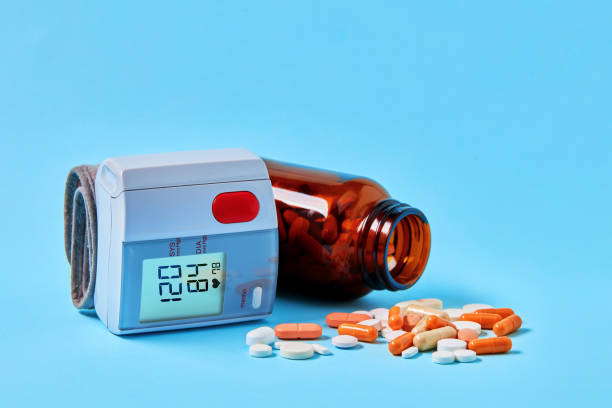Gonorrhea is a sexually transmitted infection (STI) caused by the bacterium Neisseria gonorrhoeae. It is one of the most common STIs globally, with an estimated 82 million new cases occurring annually (World Health Organization [WHO], 2022). The infection primarily affects the mucous membranes of the reproductive tract but can also infect the rectum, throat, and eyes. If left untreated, gonorrhea can lead to severe health complications, including infertility and increased susceptibility to HIV. With the rise of antibiotic-resistant strains, early diagnosis and effective management are crucial in controlling the spread of this infection.
Symptoms of Gonorrhea
Gonorrhea presents differently in men and women, and many individuals remain asymptomatic, which increases the risk of unknowingly transmitting the infection.
Symptoms in Men
In men, gonorrhea typically manifests within two to fourteen days after exposure. The most common symptoms include:
A burning or painful sensation during urination
White, yellow, or green discharge from the penis
Pain or swelling in one or both testicles (though less common)
In some cases, the infection may persist without noticeable symptoms, which can lead to complications such as epididymitis, a painful condition that affects the testicles and can result in infertility (Centers for Disease Control and Prevention [CDC], 2023).
Symptoms in Women
Women are more likely to experience mild or no symptoms at all, making diagnosis more challenging. When symptoms do appear, they may include:
Pain or burning sensation during urination
Increased vaginal discharge
Abnormal vaginal bleeding between periods or after sexual intercourse
Painful intercourse
If left untreated, gonorrhea can spread to the uterus and fallopian tubes, leading to pelvic inflammatory disease (PID). PID is a serious condition that can cause chronic pelvic pain, ectopic pregnancies, and infertility (WHO, 2022).
Other Sites of Infection
Beyond the reproductive tract, gonorrhea can also affect other parts of the body:
Rectal Gonorrhea: Can cause anal itching, soreness, discharge, or bleeding.
Pharyngeal (Throat) Gonorrhea: Often asymptomatic but can cause a sore throat and swollen lymph nodes.
Ocular (Eye) Gonorrhea: Rare but can lead to conjunctivitis when the bacteria come into contact with the eyes.
How Gonorrhea is Transmitted
Gonorrhea is primarily transmitted through unprotected sexual contact, including vaginal, anal, and oral sex. The infection can also be passed from an infected mother to her baby during childbirth, leading to neonatal conjunctivitis, which can cause blindness if untreated (Mayo Clinic, 2023).
Treatment and Management
Gonorrhea is treated with antibiotics, but increasing resistance to commonly used drugs has complicated treatment efforts. The CDC’s current recommendation for uncomplicated gonorrhea is:
A single intramuscular injection of ceftriaxone (500 mg)
If chlamydia is also suspected, doxycycline (100 mg twice daily for seven days) is prescribed (CDC, 2023)
In cases of antibiotic-resistant gonorrhea, additional testing is required to determine an effective treatment regimen. Alternative antibiotics, such as gentamicin or azithromycin, may be used in combination therapy.
Preventing Reinfection and Spread
To prevent reinfection and transmission, individuals diagnosed with gonorrhea should:
1. Complete the full course of prescribed antibiotics, even if symptoms improve.
2. Abstain from sexual activity until treatment is completed and confirmed successful.
3. Inform recent sexual partners, as they may also need testing and treatment.
4. Use condoms consistently to reduce the risk of future infections.
5. Schedule regular STI screenings, especially for those with multiple partners.
The Importance of STI Awareness and Education
Raising awareness about gonorrhea and other STIs is essential in reducing infection rates. Public health initiatives should focus on:
Encouraging open conversations about sexual health.
Promoting safe sex practices, including condom use.
Providing accessible STI screening services to high-risk populations.
Educational campaigns should also address the stigma surrounding STIs, which often prevents individuals from seeking timely diagnosis and treatment.
Conclusion
Gonorrhea remains a major public health concern due to its high prevalence, asymptomatic nature, and increasing antibiotic resistance. While it is treatable, early detection, responsible sexual behavior, and adherence to treatment guidelines are crucial in preventing complications and transmission. Regular STI screenings, safe sex practices, and global efforts to combat antibiotic resistance are essential in managing gonorrhea effectively. With continued research, education, and public health initiatives, we can reduce the impact of this infection and promote better sexual health outcomes.
References:
Centers for Disease Control and Prevention (CDC). (2023). Sexually transmitted infections treatment guidelines: Gonorrhea. Retrieved from [https://www.cdc.gov/std/treatment-guidelines/gonorrhea.htm](https://www.cdc.gov/std/treatment-guidelines/gonorrhea.htm)
World Health Organization (WHO). (2022). Gonorrhoea fact sheet. Retrieved from [https://www.who.int/news-room/fact-sheets/detail/gonorrhoea](https://www.who.int/news-room/fact-sheets/detail/gonorrhoea)
Mayo Clinic. (2023). Gonorrhea: Symptoms and causes. Retrieved from [https://www.mayoclinic.org/diseases-conditions/gonorrhea/symptoms-causes/syc-20351774](https://www.mayoclinic.org/diseases-conditions/gonorrhea/symptoms-causes/syc-20351774)





